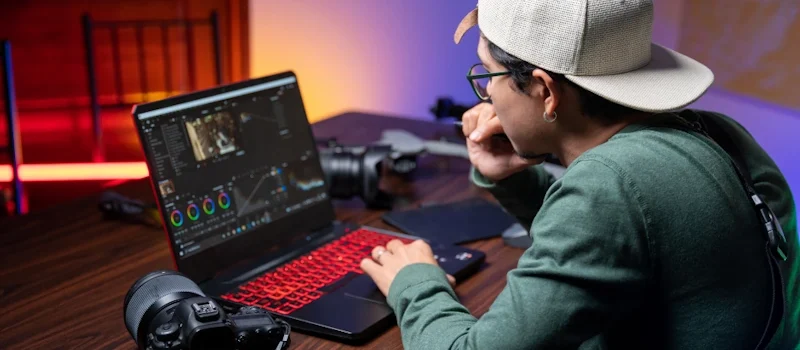
Video Editing Tasks Performed by a Virtual Assistant Video Editor
In the digital era, video content has become a powerful tool for businesses, influencers, and individuals to engage their audience. With the increasing demand for high-quality video content, virtual assistant video editors have emerged as essential contributors to the creative process. These professionals provide invaluable support by handling various video editing tasks, allowing content creators to focus on their core activities. In this blog, we will explore the key video editing tasks performed by a virtual assistant video editor and how they can help elevate your video content.
What is a Virtual Assistant Video Editor?
A virtual assistant video editor is a remote professional who specializes in editing and enhancing video content. They work with clients from different industries, including marketing, entertainment, education, and more. Unlike traditional in-house editors, virtual assistant video editors offer the flexibility to work from any location, providing their services to clients worldwide.
Key Video Editing Tasks Performed by a Virtual Assistant Video Editor
1. Footage Review and Selection:
One of the primary tasks of a video editor is to review raw footage and select the best clips for the final video. This involves watching hours of footage, identifying key moments, and ensuring that the selected clips align with the video’s overall narrative and goals.
2. Trimming and Cutting:
Trimming and cutting involve removing unwanted sections of the footage to create a seamless flow. A virtual assistant video editor ensures that the transitions between clips are smooth and that the final video is concise and engaging.
3. Adding Transitions and Effects:
To enhance the visual appeal of the video, editors add transitions and effects between clips. These can include fade-ins, fade-outs, wipes, and more complex visual effects that add a professional touch to the video.
4. Audio Editing:
Audio quality is crucial for the overall impact of a video. Virtual assistant video editors handle tasks such as removing background noise, adjusting volume levels, and syncing audio with video. They may also add background music, sound effects, and voiceovers to enhance the audio experience.
5. Color Correction and Grading:
Color correction involves adjusting the colors in the video to ensure consistency and accuracy. Grading, on the other hand, is used to create a specific mood or style by altering the color palette. Virtual assistant video editors use these techniques to improve the visual quality of the video and make it more appealing to the audience.
6. Adding Text and Graphics:
Text and graphics can provide additional information, emphasize key points, or add branding elements to a video. Editors add titles, subtitles, lower thirds, logos, and other graphic elements to enhance the video’s message and visual appeal.
7. Motion Graphics and Animation:
For more dynamic and engaging content, virtual assistant video editors can create motion graphics and animations. These elements can be used for intros, outros, explainer videos, and more, adding a professional and polished look to the content.
8. Storyboarding and Sequencing:
Storyboarding involves planning the sequence of the video to ensure that the narrative flows logically and effectively. Virtual assistant video editors work with clients to create storyboards and sequence the clips in a way that tells a compelling story.
9. Special Effects and Compositing:
For more advanced video projects, editors may use special effects and compositing techniques. This can include green screen effects, 3D animations, and other complex visual elements that enhance the overall production value of the video.
10. Exporting and Formatting:
Once the editing process is complete, virtual assistant video editors export the final video in the required format and resolution. They ensure that the video is optimized for the intended platform, whether it’s for YouTube, social media, a website, or other distribution channels.
Benefits of Hiring a Virtual Assistant Video Editor

1. Time Savings:
Editing video content can be a time-consuming process. By hiring a virtual assistant video editor, content creators can focus on other important tasks such as content creation, marketing, and audience engagement.
2. Cost-Effective:
Hiring a virtual assistant video editor can be more cost-effective than employing a full-time in-house editor. Clients can hire editors on a project-by-project basis or for a set number of hours per week, depending on their needs.
3. Access to Expertise:
Virtual assistant video editors often have specialized skills and experience in various editing software and techniques. This expertise ensures that the final video is of high quality and meets the client’s expectations.
4. Flexibility:
Virtual assistant video editors offer flexibility in terms of working hours and availability. This is particularly beneficial for clients in different time zones or those with tight deadlines.
5. Scalability:
As your video content needs grow, you can easily scale up by hiring additional virtual assistant video editors. This allows you to manage larger projects and produce more content without overburdening your existing team.
How to Find and Hire a Virtual Assistant Video Editor
1. Define Your Needs:
Before hiring a virtual assistant video editor, outline your specific needs and requirements. This includes the type of videos you produce, the editing tasks you need help with, and your budget.
2. Search for Candidates:
Look for virtual assistant video editors on freelance platforms (e.g., Virtual Assisant Philippines,Upwork, Fiverr, Freelancer), job boards, and VA-specific websites. You can also ask for recommendations from your network or industry contacts.
3. Review Portfolios:
Review the portfolios of potential candidates to assess their skills and experience. Look for examples of their previous work that align with your video content style and quality standards.
4. Conduct Interviews:
Conduct interviews with shortlisted candidates to discuss your project requirements, their editing process, and their availability. This is also an opportunity to assess their communication skills and professionalism.
5. Start with a Trial Project:
Before committing to a long-term arrangement, consider starting with a trial project. This allows you to evaluate the editor’s work quality, turnaround time, and compatibility with your team.
Conclusion
Virtual assistant video editors play a crucial role in the production of high-quality video content. By handling a wide range of editing tasks, they enable content creators to focus on their core activities and produce engaging, professional videos. Whether you’re a business looking to enhance your marketing efforts or an influencer aiming to grow your audience, hiring a virtual assistant video editor can help you achieve your video content goals. Explore your options, find the right fit, and watch your video content reach new heights.
Are you looking for a Filipino virtual assistant video editor? Let Virtual Assistant Philippines find them for you with our virtual assistant recruiting services.
Contact us for more information and take the first step towards elevating your video content today.

Share
Facebook
X
LinkedIn
Telegram
Tumblr
Whatsapp
VK
Mail